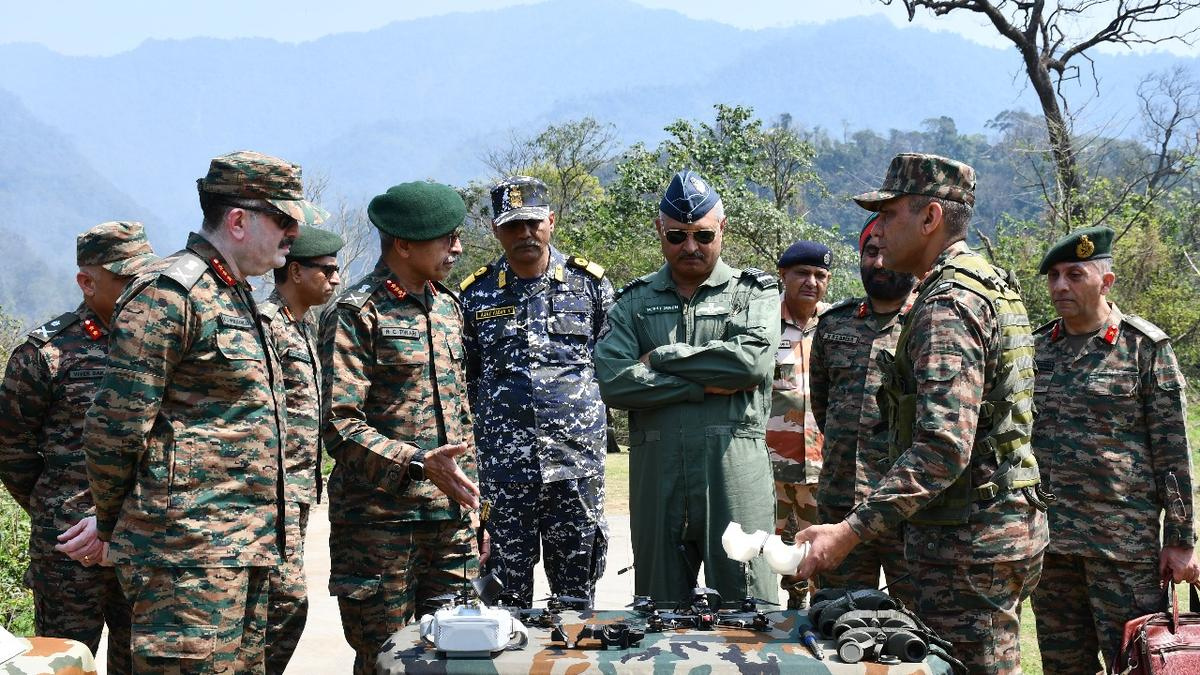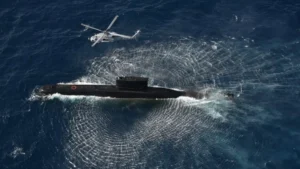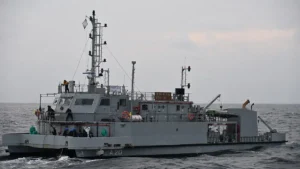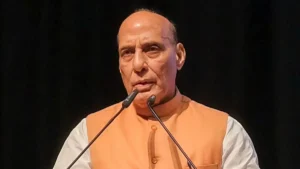The Indian Army conducted a Tri-Service integrated multi-domain warfare exercise, ‘Prachand Prahaar,’ in the high-altitude terrain of Arunachal Pradesh from March 25 to 27, 2025. The exercise aimed at validating an integrated approach to surveillance, command and control, and precision firepower across the Indian Army, Navy, and Air Force.
Overview of Exercise ‘Prachand Prahaar’
The exercise was conducted under the Eastern Command and showcased the seamless coordination of the three services in executing modern warfare tactics. It focused on jointness, technological superiority, and multi-domain operational preparedness to counter potential threats effectively.
Key Objectives of the Exercise
- Integrated Surveillance & Command Control: The exercise tested the ability of the three services to operate as a single unit, using real-time data and intelligence for decision-making.
- Precision Firepower & Target Neutralization: The exercise simulated modern battlefield scenarios, where targets were identified through advanced surveillance methods and neutralized with coordinated strikes.
- Multi-Domain Operations: The use of advanced technology in land, air, sea, space, and cyber warfare domains was emphasized.
- Enhanced Jointness & Readiness: The exercise strengthened inter-service synergy and rapid response capabilities in high-altitude warfare.
Key Features of ‘Prachand Prahaar’
1. Advanced Surveillance & Reconnaissance Capabilities
The exercise showcased the integration of cutting-edge surveillance platforms, including:
- Long-range maritime reconnaissance aircraft
- Unmanned Aerial Vehicles (UAVs) & loitering munitions
- Space-based assets for enhanced situational awareness
- Armed helicopters for real-time monitoring and quick response
2. Coordinated Firepower Deployment
Once simulated targets were identified, they were swiftly neutralized using:
- Fighter aircraft for air-to-ground strikes
- Long-range rocket systems for deep-strike capabilities
- Artillery systems up to 155 mm calibre
- Swarm drones & kamikaze drones for precision targeting
- Armed helicopters for close air support in high-altitude terrain
3. Replicating Real Battlefield Conditions
The exercise was conducted in an electronically contested environment, simulating modern warfare scenarios where communication and data-sharing were tested against potential disruptions.
Comparison with Previous Exercises
‘Prachand Prahaar’ builds upon the momentum of Exercise Poorvi Prahar, which was conducted in November 2024. While Poorvi Prahar focused primarily on the integrated application of aviation assets, ‘Prachand Prahaar’ emphasized multi-domain integration, involving multiple platforms and simulated real-time warfare conditions.
Strategic Significance of ‘Prachand Prahaar’
- Enhancing India’s Combat Readiness: The exercise validates India’s readiness to tackle evolving military threats in challenging terrain.
- Strengthening Jointness: The seamless coordination between the three services highlights the effectiveness of India’s joint military doctrine.
- Technological Superiority: The use of modern surveillance and precision strike capabilities underscores India’s advancements in modern warfare technology.
- Message to Adversaries: Conducting such an exercise in Arunachal Pradesh, near the Line of Actual Control (LAC), sends a strong strategic signal about India’s defensive and offensive preparedness.
Summary of ‘Prachand Prahaar’ Exercise
| Aspect | Details |
|---|---|
| Exercise Name | Prachand Prahaar |
| Conducted by | Indian Army, with Indian Navy & Air Force |
| Location | Arunachal Pradesh (High-altitude terrain) |
| Dates | March 25-27, 2025 |
| Objective | Validate joint surveillance, command & control, and precision firepower capabilities |
| Key Features | Advanced surveillance, coordinated firepower, multi-domain operations, electronic warfare environment |
| Technologies Used | UAVs, long-range reconnaissance aircraft, loitering munitions, swarm drones, fighter aircraft, artillery up to 155 mm, kamikaze drones |
| Strategic Importance | Enhances India’s combat readiness, joint military operations, and technological superiority |
| Comparison with Previous Exercise | Builds upon Exercise Poorvi Prahar (November 2024), adding multi-domain integration |



 Indian Navy to Commission INAS 335 (Ospr...
Indian Navy to Commission INAS 335 (Ospr...
 Indian Navy to Commission First Indigeno...
Indian Navy to Commission First Indigeno...
 Rajnath Singh Inaugurates 125 Border Inf...
Rajnath Singh Inaugurates 125 Border Inf...







